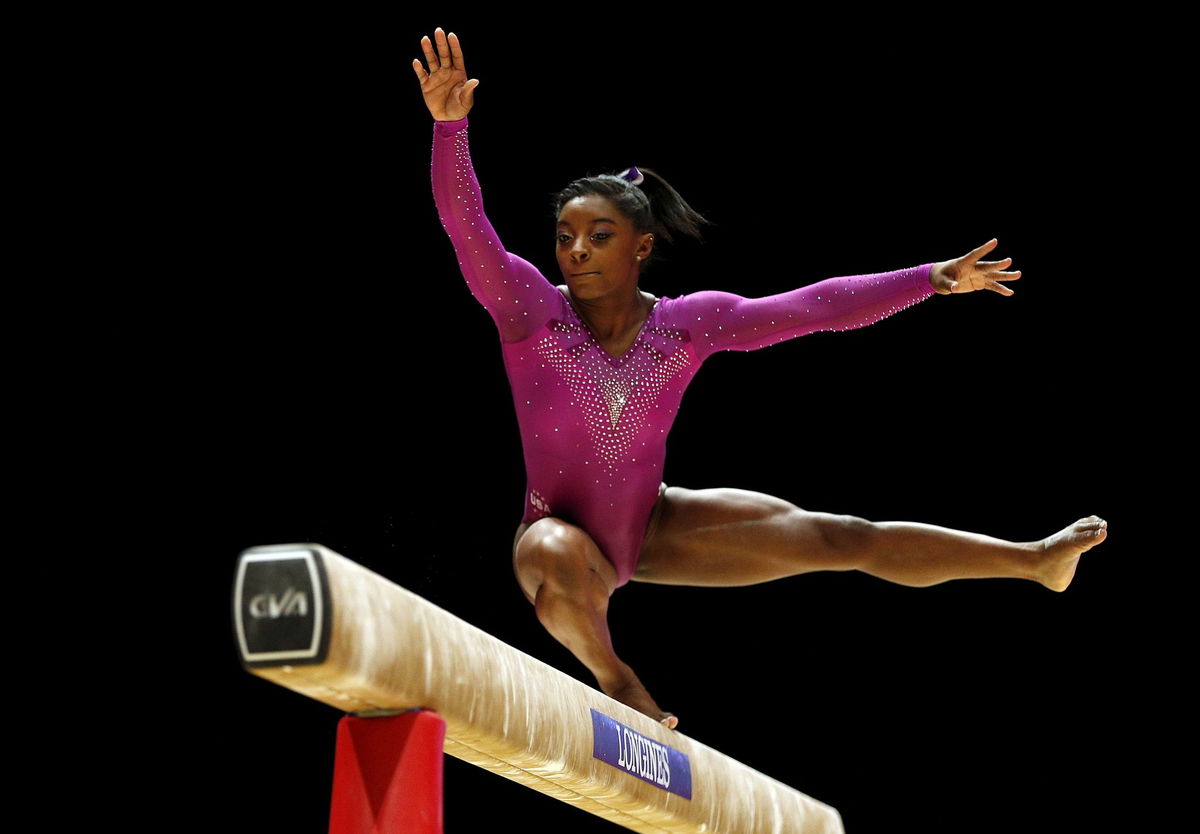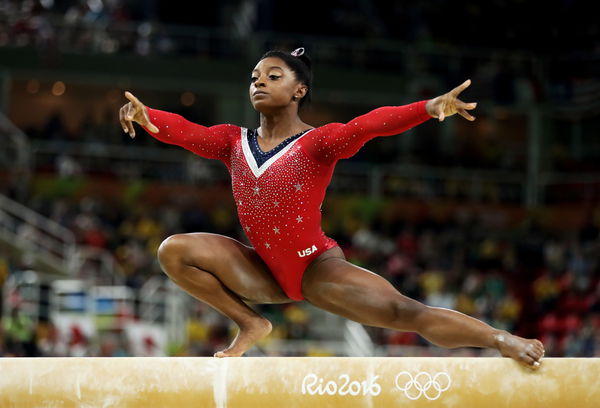
Reuters
Simone Biles of the U.S. performs during her beam routine in the women’s apparatus final at the World Gymnastics Championships at the Hydro arena in Glasgow, Scotland, November 1, 2015. REUTERS/Russell Cheyne

Reuters
Simone Biles of the U.S. performs during her beam routine in the women’s apparatus final at the World Gymnastics Championships at the Hydro arena in Glasgow, Scotland, November 1, 2015. REUTERS/Russell Cheyne
The ?wolf turn? is a balance beam move in artistic gymnastics that is widely used by gymnasts in their routines. But at the same time, it?s also quite the loathed ‘inelegant-looking, fragile and wobbly garbage fire’?of a skill, as?some?would say, for many spectators.
Watch What’s Trending Now!
ADVERTISEMENT
Even Jessica Alba?s husband questions why gymnasts keep adding it to their routines. The answer is simple: it gets rated higher for difficulty!
ADVERTISEMENT
What is the ?Wolf Turn??
While the wolf turn is not the most elegant of skills in artistic gymnastics, almost every gymnast has included it in their routine. As Vox explains, the skill is broken into four main movements. It starts off with a squat position with one leg stretched out sideways. This is followed by stretching and winding up of the arms to gain balance.

Getty
RIO DE JANEIRO, BRAZIL – AUGUST 15: Simone Biles of the United States competes in the Balance Beam Final on day 10 of the Rio 2016 Olympic Games at Rio Olympic Arena on August 15, 2016 in Rio de Janeiro, Brazil. (Photo by Lars Baron/Getty Images)
Then comes the difficult task of spinning in that position. Lastly, the gymnast has to return to the initial squat position when they stop without falling over. The reason rules rate this move higher is that even maintaining balance in the starting stance is quite difficult.
ADVERTISEMENT
The movements require incredible strength as the gymnast uses mainly their arm, leg, and core muscles to spin along the vertical axis. It?s incredibly easy for the move to fall apart with a single wobble. Not to mention they have to execute it on the beam.
Top Stories
Bengals’ Cam Taylor-Britt Sentenced to Jail: Everything We Know About Charges Against Him

Bill Cowher’s Strong Message to Steelers on Firing Mike Tomlin After HC’s Blunt Playoff Message

Pebble Beach Looks Unrecognizable as Harsh Weather Destroys Iconic Golf Course

Bill Belichick & Patriots Abandoned RB Battling Cancer, Then Forced to Join Dolphins

PGA Tour Hands Veteran Pro 1-Year Ban Despite Severed LIV Golf Ties

Phil Mickelson’s LIV Golf Hope Shatters After Akshay Bhatia Decision

ADVERTISEMENT
The Code of Points values the moves on a scale of A to H increasing in difficulty. A wolf turn?scores somewhere in the middle with double and triple wolf turns rated D and E, respectively. To put it in perspective, the rules rate a simple pirouette turn an A, while a double turn is rated D. Biles?can pull off a triple wolf turn, which is incredibly difficult.
ADVERTISEMENT
How do gymnasts like Simone Biles pull it off?
Since wolf turns are a great way to increase the difficulty score, every gymnast adds at least one turn into their routine. The execution score depends on how well you perform the skill. And for a triple turn, it takes a lot to score high.
ADVERTISEMENT
Nicole Langevin, a gymnastics judge, explained,??To truly spin that, with proper posture, proper foot position, proper execution, and precision of arms is pretty darn difficult.?
ADVERTISEMENT
Right from the foot position in the starting stance, the skill requires a lot of precision. Gymnasts need to turn the support foot out as in ballet. And that?s exactly how it must finish at the end, which usually gymnasts fail to achieve. Additionally, the extended leg must stay extended throughout. This precise dynamic execution is something only top athletes like Simone Biles can pull off.
Hence, we see a lot of wolf turns in competition, and the highest quality can be seen by those on the top of the game.
ADVERTISEMENT
ADVERTISEMENT
ADVERTISEMENT
ADVERTISEMENT

